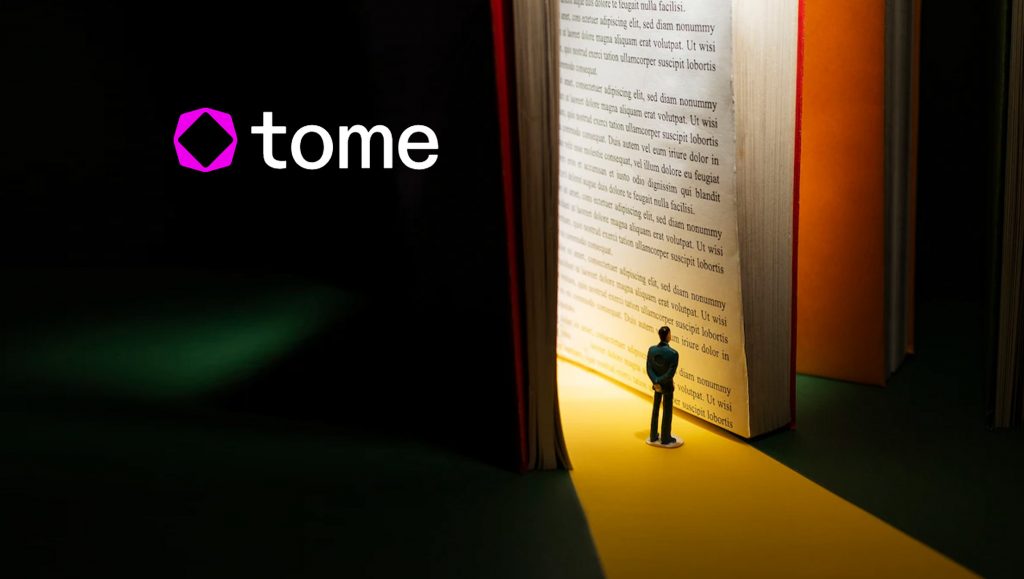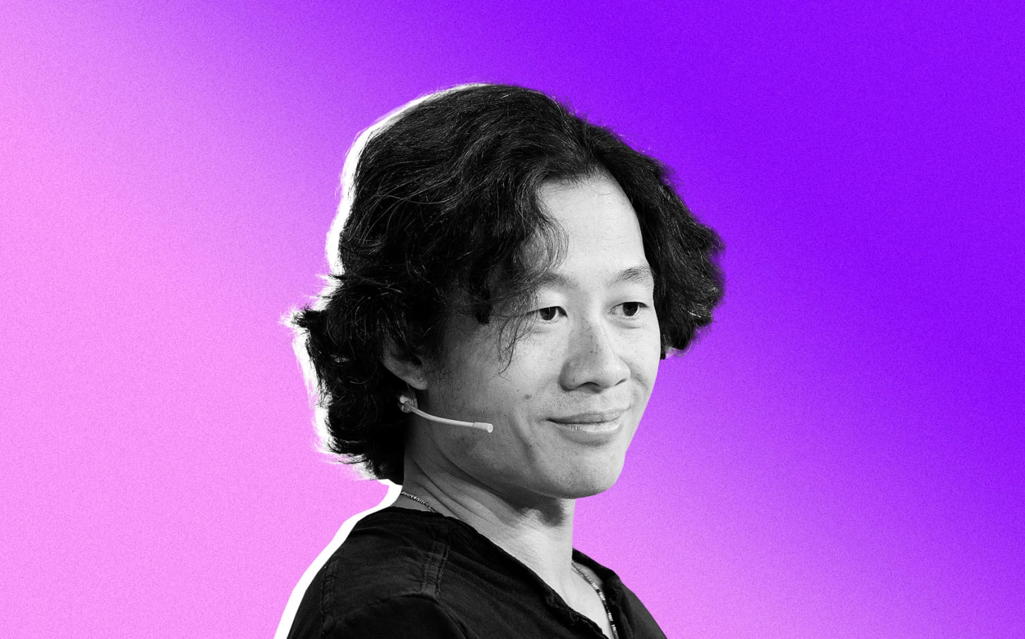Since its launch in September, Tome claims to have amassed 1 million users in record time for a productivity software company, earning it a valuation of $300 million before it has even generated a dime in revenue.
Henri Liriani, one of the people who started Tome, types a request for a fundraising pitch for a telescope startup in a chat box under a black canvas that is otherwise empty.


Tome’s software generates the presentation he requested in under a minute. An AI-generated table of contents, introduction text, business model, and sales plan spread across eight slides, complete with accompanying cyberpunk-themed images. While this isn’t quite a pitch deck, it does serve as a good foundation from which to build. You won’t have to waste time looking for a good PowerPoint or Google Slides template, typing in text, or resizing images.
In his opinion, the output’s randomness adds a certain degree of fun, as Liriani puts it. “It’s fascinating to view this kind of resource as a co-thinker.”
Tome was developed over the course of two years by ex-Meta managers Liriani and Keith Peiris, who released a free beta version in September and integrated AI models from OpenAI in November. Based in San Francisco, Tome reached one million users just 134 days after its launch, in early February. Based on the research it reviewed and shared with Forbes, the company thinks Tome will be the first productivity tool to ever reach that milestone, beating out competitors like Dropbox, Slack, and Zoom.
Tome is planning to take advantage of the situation now. Lightspeed Venture Partners led a $43 million Series B funding round for the company, which also included investments from Coatue, Greylock, Stability.ai CEO Emad Mostaque, and former Google CEO Eric Schmidt. A source who knew about the funding round said that after the investments, Tome was worth $300 million, up from $175 million after its Series A round in 2021. This was accomplished with zero revenue generated by the company.
“We set out to build a company that can help anyone tell a compelling story,” Peiris said in an interview with Forbes. From cave paintings to campfire tales to PowerPoint presentations, storytelling has always been an integral part of human progress.
Peiris, Liriani, and another ex-Meta product manager, Greylock’s Seth Rosenberg, worked on Tome during a pandemic lockdown in 2020. They did this in part because they were frustrated with Microsoft PowerPoint, the famous slide presentation program that came out in 1987. They thought that, like Google Slides, it didn’t work well on mobile devices and that sending and inserting static screenshots was the only way to share and embed images of prototypes, customer data, or other artifacts. Meanwhile, progress in large-language models like OpenAI’s GPT series could have the same transformative effect on pitch decks as it has on text prompts. An AI tool that examines 10,000 pitch decks can learn their typical structures, just as many Pixar films follow a similar hero’s journey.
“You can’t just weld AI onto the outside of a product.”
Peiris and Liriani started working on what was originally called Magical Tome after fellow product managers said they’d pay for a fuller version of a mock-up he’d quickly whipped up. Reid Hoffman, who worked with Rosenberg at Greylock, led a seed round and joined the board. In March 2022, the company announced itself in a TechCrunch article that didn’t mention AI at all, despite having raised a Series A funding round led by Coatue.
Tome has made software that can automatically place and size text and images dropped onto its canvas by rethinking the PowerPoint system as a set of uniform, slide-friendly tiles. In contrast to a normal presentation, tome tiles are made up of parts that can be added or taken away. When you change one, it affects all the others. Because it has AI built in, Tome now does a lot of queries in the background using different large-language models to answer a user’s presentation prompt. Before sending any questions to the AI models, the software creates a template for the output, determining its length and style. The user can change the results even more, or the AI can be asked to make more pages.
Tome has a wide range of applications, from creating children’s bedtime stories to creating 3-D prototypes, but it has become most popular as a replacement for PowerPoint and Slides. In order to secure funding, artificial intelligence meeting notes startup Supernormal created a pitch deck in Tome; others have used it to create sales presentations or visual blogs.
A Lightspeed partner and former co-founder of the podcast startup Anchor, Michael Mignano, saw a video of Tome’s announcement demoing its AI tools on Twitter and reached out to Audacious Ventures’ founder and previous backer, Nakul Mandan, for an introduction. Tome’s founders called him on a Thursday night, and the next day he was in San Francisco, where he presented them with a term sheet for their Series B funding round. It blew my mind that such a high-quality asset could be made so quickly, and the format itself just seems so much more cutting-edge than any other presentation format that has come before it, as Mignano put it. (On Wednesday, Mignano additionally released a Tome devoted to the monetary commitment.)
Forbes spoke with investors about the current generative AI boom, and they told them that one of the biggest questions for startups looking to build with AI tools will be whether or not they are building defensible products and user experiences or ones that will be easily copied, more or less, by incumbent companies.
When Tome launches its enterprise version later this year, for which it plans to charge about $10 per user per month, the company can expect to be met with such skepticism. Still, popular more than three decades after its introduction, PowerPoint has a parent company in Microsoft, which has heavily invested in OpenAI with a plan to integrate its models across its products. More than 15 years have passed since Google first introduced Slides, and while the company may have blown an early lead in artificial intelligence, it now prioritizes getting new products out the door. Canva, Coda, and Notion, all of which are well-known design and collaboration software unicorns, have also added AI features, with more to come.
Even this hasn’t fazed Peiris. Because of PowerPoint’s large user base, which has become accustomed to the program over the course of many years, the company won’t be able to make major changes to the program, he argued. Hoffman, the movement’s original backer, predicted that “when people would say you had to build mobile-only, or mobile-first, products to do mobile,” the same would be true in artificial intelligence. One cannot simply “AI-ize” a product by welding AI onto its exterior.
Tome has also tried to find allies, like Google’s CEO Eric Schmidt and the heads of Airtable, Notion, and Zoom’s venture arm. In artificial intelligence, Tome has built investor ties to OpenAI, which gives it early access to GPT-4. It has also brought on board Mostaque, the CEO of Adept AI Labs, and the CEOs of Copy.ai and Weights & Biases as personal investors. Because of an OpenAI outage, Tome users, like this reporter, were unable to make presentations for a while on Tuesday. In response, Peiris said he would meet with Anthropic, a competitor to both Stability AI and OpenAI, next week to talk about how to combine their models into a business solution.
“I don’t see a world where you press a button and your pitch deck is done.”
In the coming months, Tome’s creators plan to build and maintain their own specially trained models to make its generations even more advanced; they describe a future in which teams can embed real-time, automatically updated Figma files or user metrics directly from a customer’s database while also permitting collaborative live feedback to change outputs by color scheme or tone. To paraphrase Peiris: “I don’t see a world where you press a button and your pitch deck is done, and you send it to VCs, and they wire you money.”
At least one early adopter learned the hard way that not everyone is going to be thrilled by projects that are aided by TOME. When a high school teacher found out that one of her students had made a presentation in Tome for class, Liriani tweeted (with the student’s permission) screenshots of emails from that student. To prove that they had not deviated from Tome’s AI generations in any way, they provided logs at the student’s request. The teacher gave the student a second chance to turn in the project in the required Google Slides format and for up to 70% of the original grade.




